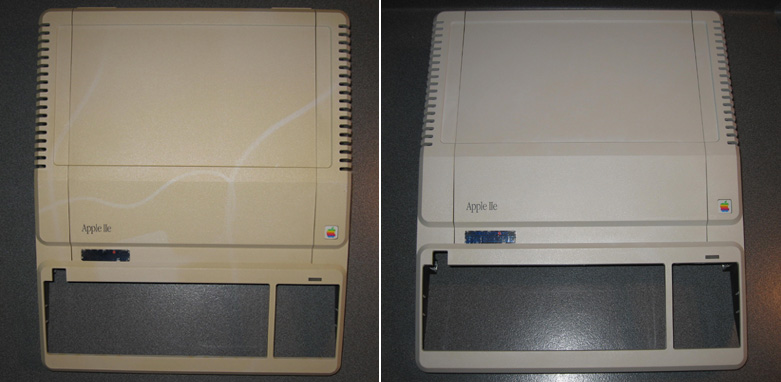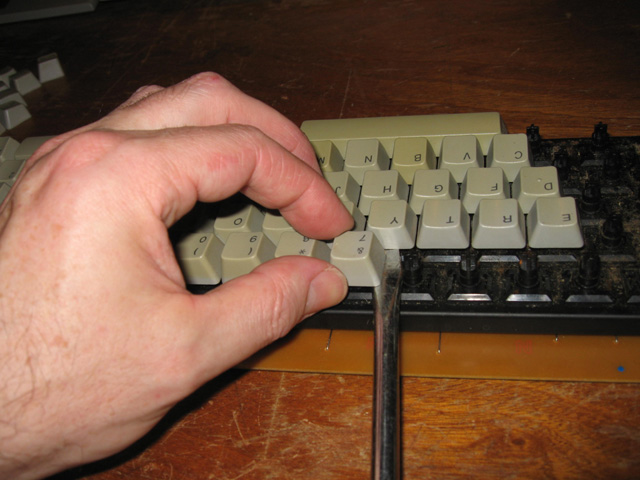De-yellowing an Apple IIe Platinum
If you have followed these series of blogs you may remember the Apple IIe platinum micro which came in as part of the Apple haul. I managed to repair this unit, but the case and keyboard left a lot to be desired. Years of neglected had lead to serious discolouration. Having gained experience in the de-yellowing process to the extent that it was almost routine, I decided to tackle this problem.
The case and the keyboard were disassembled and processed separately.
The Case
The case was painted using the paste recipe and left out in the New Zealand summer sun for two days. As I found with the other cases I've processed, results were outstanding. The case returned to a clean, creamy-white colour with no sign of degradation whatever.

Photo 1. Before and after photos of the Apple IIe platinum case
As with the Atari keys however, there is a note of caution. The Apple IIe lettering on the case did fade a little. It was minor, but discernable. Care is needed, and it seems important not to let the discolouration process go on for too long.

Photo 2. Close-up of the Apple lettering on the case before and after treatment
Keys
The removal of the keys was pretty straightforward. I found a firm slow pull directly upwards sometimes aided by some counter-pressure from a flat-bladed screwdriver did the trick. Some of the larger keys required the disengagement of a supporting metal rod first.

Photo 3. removing the keys
The Atari keys were stuffed in a jar to soak. One problem with this is that not all the keys received a uniform dose of UV. Those near the centre of the jar were shaded by those closer to the outside.
This time I took a different approach. I put the keys and the "activated" hydrogen peroxide solution (i.e. with about 1/5 teaspoon of Oxi-magic added) in a shallow tray.

Photo 4. Keys soaking. (the large one is an Atari 130XE spacebar. It was too big to fit in the jar with the other Atari keys)
To stop the keys floating, I used blu-tack stuffed in the cavity underside as ballast. This worked pretty well, although even with the ballast, the larger keys tended to float to the surface. During the reaction, bubbles of oxygen gas are formed at the surface of the keys and this gives them buoyancy. This is especially true of the larger keys, where bubbles can form inside causing the key to float. I found I was forever turning these keys over to release trapped oxygen so they would sink!
Most keys received two days treatment. There were some though (mainly the larger keys), where the discolouration appeared stubborn. These got an extra day of soaking.
Result

Photo 5. Before

Photo 5. After
The decolourisation of the keys wasn't perfect. Some of the worst discoloured keys;- the ones that had the longest time in the bath;- ended up a little "streaky". This can be seen in the space bar and shift keys in the photo above.
That's just a minor flaw though and overall the result was pretty good. The Platinum certainly looks nothing like the scungy unit that arrived in the back of a truck a few months ago. It's now a beautiful working treasured unit.
Tez
5th February, 2009
| Tweet |